Time to read: 7 min
Automotive injection molding lets designers produce plastic parts for electric vehicles (EVs), plug-in hybrids (PHEVs), and cars, trucks, and motorcycles with internal combustion engines (ICE). Although automotive plastic molding is usually associated with high-volume production, designers can also use injection molding for rapid prototyping and lower production volumes. Moreover, some automotive plastic injection molding companies also provide parts made of silicone high-consistency rubber (HCR) or thermoplastic elastomers (TPEs).
Today, the market for automotive injection molding spans original equipment manufacturers (OEMs), tiered suppliers, and providers of aftermarket auto parts and accessories. Injection-molded car parts for automotive interiors include grills, bumpers, headlights, fenders, side mirrors, and splash guards. Exterior components run from the dashboard to the roof lining and include door handles, center consoles, and plastic parts with a decorative finish. Plastic injection molding is used commonly, but injection-molded HCR is found in automotive hoses and connectors and TPEs are found in weather seals.
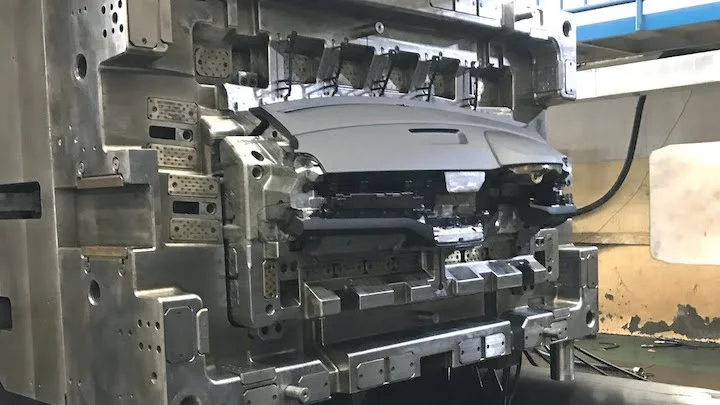
Large plastic parts such as dashboards can also be injection molded.
This article explains how designers can use automotive injection molding to bring their ideas to life, while addressing design and manufacturing challenges. It contains the following sections.
- Vehicle Lightweighting
- NVH Management
- Material Durability
- Material Recycling
- IATF 16949 Certification
- Class A Surfaces
- High Gloss Finishes and Surface Texturing
- ROI in Injection Molding
Fictiv is where you’ll find automotive injection molding expertise and get design for manufacturing (DFM) feedback that helps you reduce costs and accelerate project timetables. We also offer downloadable assets like our “Injection Molding Design Guide.” This free resource contains best practices for material selection, wall thickness, draft angles, corner radii, and much more.
Download the Injection Molding Design Guide
By combining what you’ll learn from the Guide with what you’ll read in this article, you’ll be well on your way to automotive injection molding success.
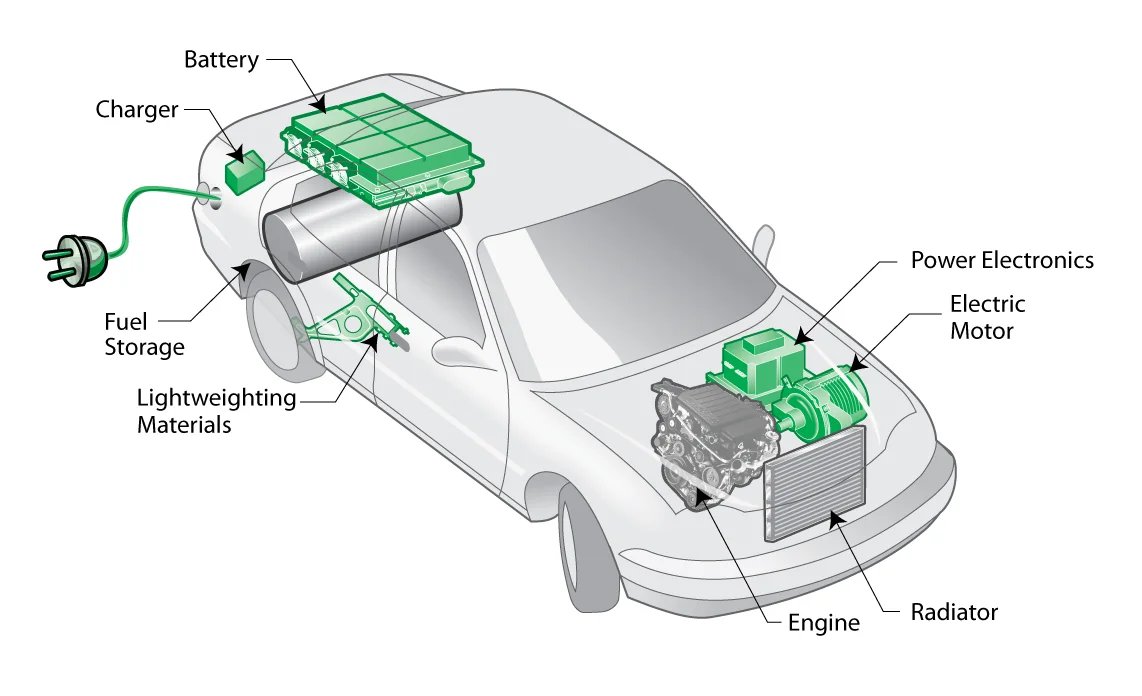
Like EVs and ICE vehicles, plug-in hybrid electric vehicles (PHEV) use lightweighting materials.
Vehicle Lightweighting
Lightweighting is a design strategy that reduces the weight of components and assemblies. In the automotive industry, it began as a way to increase fuel efficiency and improve vehicle handling. Although EVs are powered by electric batteries instead of liquid fuel, vehicle lightweighting is still important because electric vehicles are significantly heavier. Regardless of how a vehicle is powered, designers can pursue lightweighting initiatives through material substitution, design optimization, and component elimination.
Automotive injection molding lets designers leverage all three approaches. For example, glass-filled nylon can replace heavier metal materials in gears, bearings, fan blades, latches, manifolds, and fuel tank caps. To optimize vehicle designs, engineers can use aerodynamic parts like injection molded plastic spoilers. Overmolding, an injection molding technique, can eliminate fasteners or clips along with secondary processes that add production costs and extend project timelines.
By molding one material over another, overmolding lets parts designers leverage the best properties of both materials, while eliminating the need for post-molding operations (e.g., applying adhesives or installing fasteners). With automotive parts, softer elastomers are sometimes molded over harder thermoplastics. Examples include the electric motor housings in EVs, which are prone to vibration. Plastic and rubber are both lighter than metal, but rubber helps reduce noise, vibration, and harshness (NVH).
NVH Management
Like vehicle lightweighting, NVH management is an important design consideration in the automotive industry. Drivers and passengers don’t want to hear excessive amounts of road noise, nor do they want to hear buzz, squeak, and rattle (BSR) caused by vibrating components. Metals readily transfer vibrations, which can produce audible noise as they pass through structural elements. When vibrations are transmitted to interior components like windows, BSR can indicate poor design to potential car buyers.
In electric vehicles, overmolded parts such as electric motor housings do more than offset the weight of heavy battery systems. Rubber is one of the best materials for vibration absorption because of its high shear modulus and resistance to permanent deformation. By using an enclosure with injection molded rubber over plastic, an automotive OEM can reduce NVH, a problem that’s especially noticeable in EVs because of their quieter ride.
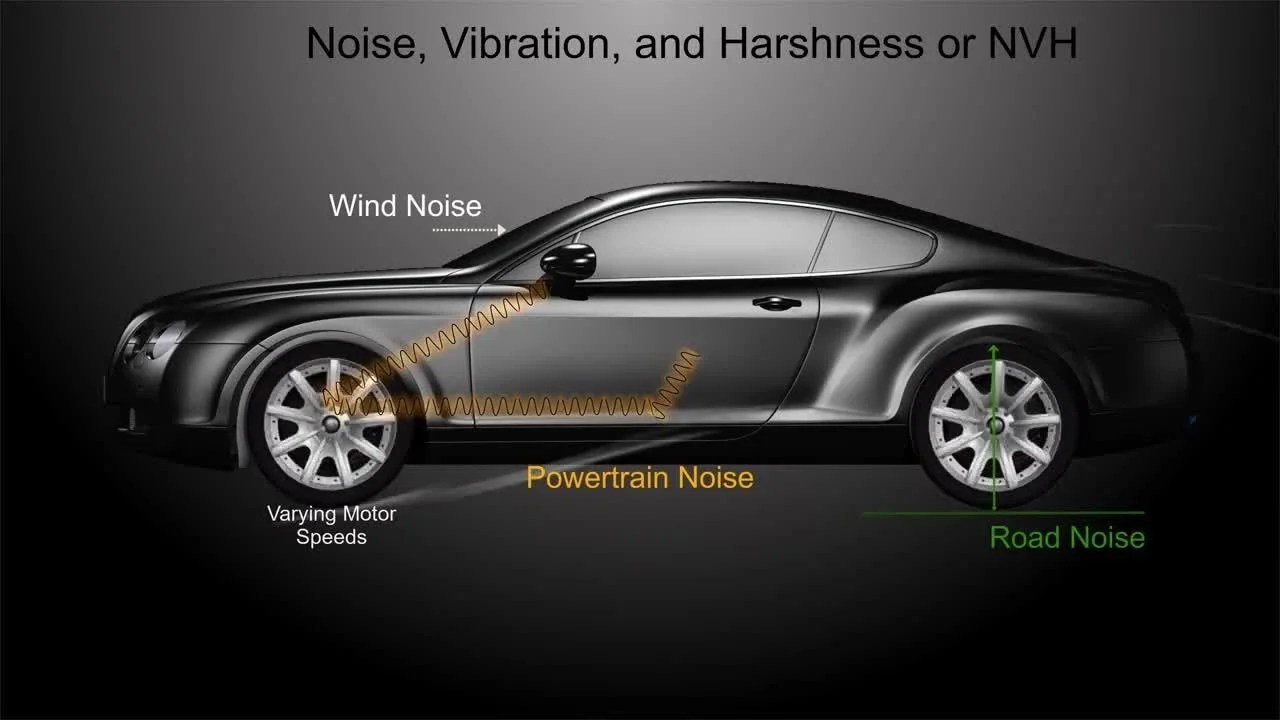
Material Durability
Durability refers to the ability of a product to remain functional when faced with the challenges of normal operation over its design lifetime. Whether it’s for under-the-hood components, safety components, or in-car electronics, a plastic car parts manufacturer needs to balance material durability against vehicle lightweighting and NVH management. Metals are stronger than plastics and are regarded as more durable. However, durability isn’t just about strength.
Through automotive injection molding, commonly used plastic materials can provide the durability that’s required for specific applications. For example, polypropylene (PP) is used in injected molded bumpers because it combines excellent resistance to moisture and sunlight with good fatigue strength. Polycarbonate (PC) is used in automotive headlights because it comes in grades with 80% to 90% light transmission. Plus, PC maintains its properties over a wide temperature range. Acrylic (PMMA) is also used in automotive lighting because of its optical clarity, strength, and resistance to ultraviolet (UV) light.
Nylon is an injection moldable thermoplastic that comes in glass-filled grades with high wear resistance, rigidity, strength, toughness, and dimensional stability. Acrylonitrile butadiene styrene (ABS) is both hard and shiny, which makes it a good choice for injection molded parts like plastic wheel covers. Silicone is an elastomer that withstands a wide range of temperatures while resisting thermal aging, a reduction in physical properties over time because of exposure to high heat. Injected molded TPE is durable enough to withstand outdoor elements, but that’s not the only advantage for automotive applications.
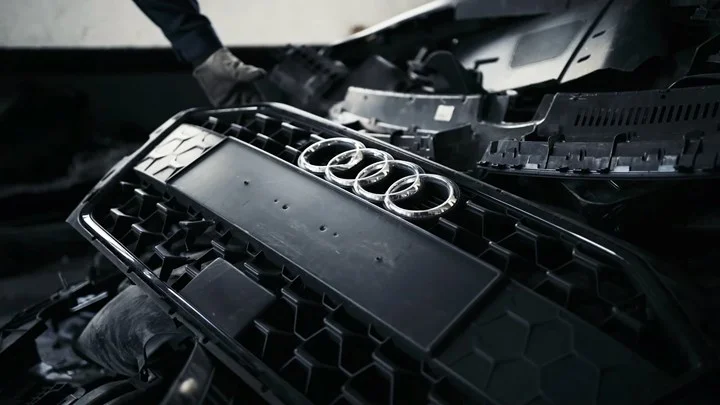
Audi uses components made from mixed automotive plastic waste. Image: CompositesWorld
Material Recycling
Unlike EPDM rubber, a traditional material for automotive door and window seals, TPEs are recyclable because of their thermoplastic properties. That’s an important consideration for automotive OEMs and plastic part suppliers who are pursuing environmental sustainability initiatives. Silicone rubber can also be recycled, but this synthetic elastomer degrades with each use. By contrast, fully thermoplastic materials such as injection molded polypropylene, polycarbonate, ABS, acrylic, and nylon can be recycled and then injection molded again. Mixed plastic waste can also be used in cars.
IATF 16949 Certification
Depending on a project’s requirements, a part designer may require the services of an automotive plastic injection molding company that is ITAF 16949:2016 certified. Developed by the International Automotive Task Force (IATF), this industry certification establishes the requirements for a quality management system (QMS) that encompasses continuous improvement, defect prevention, and supply chain management. ITAF 16949 is based on ISO 9001, but ITAF 16949 compliance goes beyond the QMS requirements that are required for ISO 9001:2015, a certification that’s held by many injection molding companies.
Class A Surfaces
Automotive injection molding can be used to produce plastic parts with Class A surfaces. Typically, this level of surface quality is assessed visually by the flow and smoothness of reflections, lights, and shadows. Class A surfaces are also free of scratches and noticeable defects. Exterior auto parts with Class A surfaces include bumpers, body panels, and the exterior body trim and pillar seals. Interior components with Class A surfaces include instrument panels, center consoles, and dashboards as well as closure latch mechanisms and stabilizer bumpers.
Because electric vehicles cost more than their gasoline or diesel-powered counterparts, some automotive OEMs treat EVs as premium purchases that require more Class A surfaces. Consequently, designers need to pay close attention to parting lines—the area where the two halves of an injection mold (core and cavity) separate to release the part. If the parting line is located in a highly visible area, an injection molding defect called flash may occur because of the escape of molten plastic. An injection molder can minimize the risk of flash by considering material flow and injection points when designing the automotive injection mold.
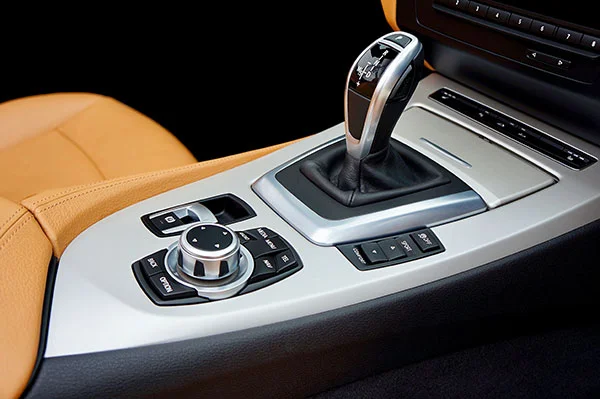
Automotive injection molding can produce both high gloss and textured surfaces.
High Gloss Finishes and Surface Texturing
Some injection-molded automotive parts, such as the plastic covers for interior lighting fixtures, require high gloss finishes. Toward the end of the toolmaking process, a mold maker applies an appropriate injection molding surface finish to the mold. Then, during the molding process, this finish is transferred from the tool to the surfaces of molded parts. Two trade associations, the Society of the Plastics Industry (SPI) and the Society of German Engineers (VDI), define the high gloss finishes used by the automotive industry. In North America especially, SPI standards A-1, A-2, and A-3 are used for high gloss finishes.
Plastic injection molded parts can also have a textured rather than polished finish. There are hundreds of texture options, but SPI and VDI are the two main systems used by the industry. In addition to light, medium, and heavy textures, other options include simulated wood or leather grain and checkerboards and diamond patterns. For designers, it’s important to apply a heavier draft angle to textured parts so they can be released from the mold easily, and without drag marks. Generally, 2° of draft is used.
ROI in Injection Molding
In automotive injection molding, return on investment (ROI) is about the cost of the tool relative to the number of parts produced. Although many part designers associate plastic injection molding with hardened steel molds for high-volume production, it’s possible to machine prototype and low-volume tools from aluminum, softer steels, or semi-hardened steels. Aluminum is the least expensive of these lower-cost metals, but aluminum can’t match the tolerance levels of steel molds. Plus, aluminum molds may wear prematurely if glass-filled nylon is used or tool maintenance is neglected.
For prototype injection molding, part quality is more important than tool life, especially for first article inspections (FAIs). Cycle time is also less important, at least for designers who need lower volumes of pre-production parts. Still, it’s possible to accelerate parts production by using molds made of softer steels or semi-hardened steels that are ready in less than two weeks. Designers who are concerned about the ROI in injection molding can also use master unit dies, or MUD molds, that consist of a standard frame and interchangeable plates. MUD molds require less machining time and are cost-effective for lower volumes.
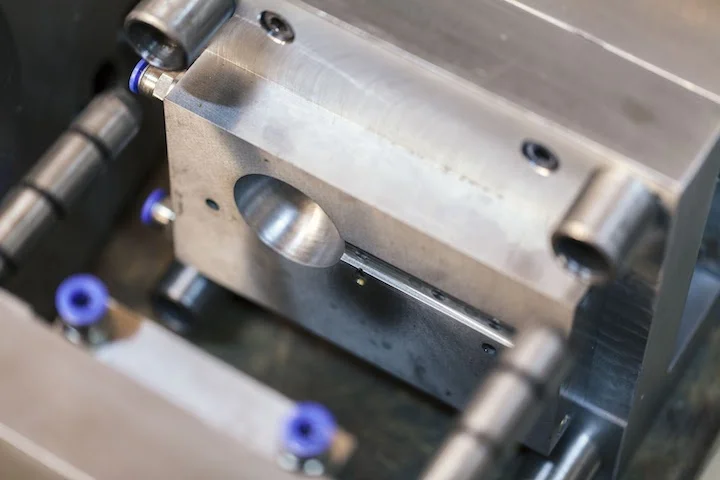
Fictiv provides automotive designers with a choice of mold materials.
Choose Automotive Molding from Fictiv
There are many automotive injection molding suppliers, but part designers need design and manufacturing expertise to help turn their ideas into reality. Fictiv provides expert DFM assistance along with our response to your request for a quote. Plus, we work with a carefully vetted global network of manufacturing partners, including options for localized production. At a time when supply chain management is more important than ever, isn’t it time to reduce the risk of injection molding defects while getting parts faster? If you’re ready to take the next step, create a free Fictiv account and request a quote.










